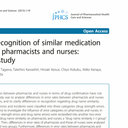Activation of p38 MAPK by oxidative stress underlying epirubicin-induced vascular endothelial cell injury.
Sleutelwoorden
Abstract
Epirubicin, an anthracycline antitumor drug, often causes vascular injury such as vascular pain, phlebitis, and necrotizing vasculitis. However, an effective prevention for the epirubicin-induced vascular injury has not been established. The purpose of this study is to identify the mechanisms of cell injury induced by epirubicin in porcine aorta endothelial cells (PAECs). PAECs were exposed to epirubicin for 10 min followed by further incubation without epirubicin. The exposure to epirubicin (3-30 μM) decreased the cell viability concentration and time dependently. Epirubicin increased the activity of caspase-3/7, apoptotic cells, and intracellular lipid peroxide levels, and also induced depolarization of mitochondrial membranes. These intracellular events were reversed by glutathione (GSH) and N-acetylcysteine (NAC), while epirubicin rather increased intracellular GSH slightly and L-buthionine-(S,R)-sulfoximine, a specific inhibitor of GSH synthesis, had no effect on the epirubicin-induced cell injury. The epirubicin-induced cell injury and increase of caspase-3/7 activity were also attenuated by p38 mitogen-activated protein kinase (MAPK) inhibitors, SB203580 and PD169316. Moreover, epirubicin significantly enhanced the phosphorylation of p38 MAPK, and these effects were attenuated by GSH and NAC. In contrast, a c-Jun N-terminal kinase inhibitor SP600125, an extracellular signal-regulated kinase inhibitor PD98059, and a p53 inhibitor pifithrin α did not affect the epirubicin-induced cell injury and increase of caspase-3/7 activity. These results indicate that an activation of p38 MAPK by oxidative stress is involved in the epirubicin-induced endothelial cell injury.


